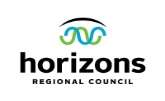
Regional Council
27 April 2022
Report No.
22-37
Decision Required
LOWER WHANGANUI SCHEME - TE PŪWAHA UPDATE
1.
PURPOSE
1.1.
This item updates members on progress with the river training infrastructure upgrade
component of the Te Pūwaha / Whanganui Port Revitalisation Project. The item also
updates financial forecasts through to project completion and seeks Councils direction on
budgets for the project.
2.
EXECUTIVE SUMMARY
2.1.
Te Pūwaha refers to the gateway, or river mouth. It is also the name of the Whanganui port
revitalisation project. Te Pūwaha is a partnership involving Whanganui Iwi and five other
groups invested in the project: Whanganui District Council (WDC), Horizons Regional
Council (Horizons), Q-West Boat Builders, Whanganui District Employment Training Trust
and central government. The total investment in Te Pūwaha is over $50M, with
infrastructure works carried out in several sub projects. This Council item focuses on the
component of the project to strengthen and upgrade old river training structures in the
lower reach of the Whanganui River. More information on Te Pūwaha and the other
components of work is available on Horizons and WDC websites.
2.2.
A project governance structure has been established in accordance with the legislation
requirements under the Te Awa Tupua (Whanganui River Claims Settlement) Act, 2017
(Te Awa Tupua Act). Project delivery is being managed as a partnership between Te
Mata Pūau and Horizons staff. Te Mata Pūau are the hapū col ective leading application of
Te Awa Tupua framework together with key partners across the governance and
operational levels.
2.3.
Te Awa Tupua Act was enacted to implement the historical Treaty Settlement with
Whanganui iwi in relation to the Whanganui River. Te Awa Tupua represents a new
beginning in terms of respect for the Whanganui River and recognition of the inalienable
connection between Whanganui Iwi and the Whanganui River. This is a detailed set of
legislation which includes a range of mechanisms to recognise the Whanganui River as Te
Awa Tupua and to provide legal expression to the relationship between Whanganui Iwi and
the River.
2.4.
A fundamental driver for Te Pūwaha as a project is the requirement for al communities and
authorities to uphold the values of Tupua te Kawa are the intrinsic values that represent the
essence of Te Awa Tupua. These values include:
Ko Te Kawa Tuatahi - Ko te Awa te mātāpuna o te ora: the River is the source of
spiritual and physical sustenance: Te Awa Tupua is a spiritual and physical entity
that supports and sustains both the life and natural resources within the Whanganui
River and the health and wel -being of the iwi, hapū, and other communities of the
River.
Ko Te Kawa Tuarua - E rere kau mai i te Awa nui mai i te Kahui Maunga ki
Tangaroa: the great River flows from the mountains to the sea: Te Awa Tupua is an
indivisible and living whole from the mountains to the sea, incorporating the
Whanganui River and al of its physical and metaphysical elements.
Lower Whanganui Scheme - Te Pūwaha Update
Page 1
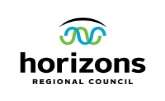
Regional Council
27 April 2022
Ko Te Kawa Tuatoru - Ko au te Awa, ko te Awa ko au: I am the River and the River
is me: the iwi and hapū of the Whanganui River have an inalienable connection
with, and responsibility to, Te Awa Tupua and its health and wel -being.
Ko Te Kawa Tuawhā - Ngā manga iti, ngā manga nui e honohono kau ana, ka tupu
hei Awa Tupua: the smal and large streams that flow into one another form one
River: Te Awa Tupua is a singular entity comprised of many elements and
communities, working col aboratively for the common purpose of the health and
well-being of Te Awa Tupua.
2.5.
The River Training Structures part of the overal Te Pūwaha programme is funded via an
agreement between central government, via the Ministry of Business, Innovation and
Employment (MBIE), and Horizons dated 10 July 2020. This provides for a central
government contribution of up to $7.5M towards a $15M project to strengthen and upgrade
old river training structures in the lower reach of the Whanganui River. Horizons
contribution to this project is $5.7M and WDC’s contribution $1.8M.
2.6.
The project as scoped included three stages with Stage 1 being the North Mole
reconstruction works and Stage 2 the South Mole reconstruction works. The third stage is
the possible extension to the Tanae Groyne and improvements/strengthening of South Spit
erosion protection/training structures upstream of Tanae Groyne. Stage 1 of the 3 stage
project is now well advanced and is scheduled for completion in late 2022. Preliminary
work in respect of Stage 2 is also wel underway with commencement of physical works
scheduled for November 2022.
2.7.
This paper seeks Council direction on the budgets for the Whanganui Scheme related
rates in the upcoming Annual Plan processes to account for the fol owing factors:
1. Increased costs for the delivery of Stage 1 and 2 which is now projected to be delivered
for a total budget of $16.2M, being approximately $2.75M or 20% higher than original y
budgeted. Cost increases relate to project management and communications $1.297M,
consenting and design $0.254M, construction costs for stage 1 ($0.8M) and for Stage 2
$0.4M. It is noted that the cost projection for Stage 1 construction includes a
provisional sum of an additional $0.75M for two fishing platforms and staff are working
to get further certainty around this amount prior to the Council meeting;
2. Alignment of Horizons funding contribution with the funding commitments of the
government contract for the River Training Structures part of the Te Pūwaha project.
Currently Horizons Long-term Plan (LTP) for 2018-2028 and LTP 2021-2031 both
overestimate the WDC contribution at 25% rather than the fixed $1.8 mil ion
contribution;
3. Updated phasing of Horizons planned expenditure on this project given new
information from the current delivery of the project to the end of March 2022;
4. Removal of the delivery of Stage 3 from the scope of the Government and WDC
co-funded project to offset the increased costs for the Stage 1&2. Note the paper
recommends a resolution for Council to direct the CE to present further information on
Stage 3 to the Annual Plan process in 2023-24;
5. Inclusion of a budget of $100,000 over two years for scoping and monitoring work to
inform planning for Stage 3;
6. Providing a budget for further scoping and delivery of amenity enhancement projects
(noting this is additional to the costs provisioned for in 1 above); and
7. Other changes to work programmes for other Whanganui Scheme related activity to
further reduce the impact of the cost increases identified for Stage 1 and 2 above and
in recognition of the readiness of that other activity and capacity of Horizons and
project partners to deliver this additional work during the next two years.
Lower Whanganui Scheme - Te Pūwaha Update
Page 2

Regional Council
27 April 2022
2.8.
It is noted that the project budgets are subject to further change as additional design and
consenting work etc. is completed and inflationary pressures, contractor pricing etc. are
further accounted for.
2.9.
In total the increased funding required from Horizons for this project is $2.2M. As a part of
the review of the LTP year 2 budgets to the Annual Plan for 2022-23 there have been
revisions to the budgets and phasing of works and associated loan repayments for the
Lower Whanganui Scheme rates, which are funded 80% by targeted rate and 20% general
rate. As a result the proposed impact of this change in budgets, the targeted rates required
this Annual Plan has been slightly reduced compared to year 2 of the LTP (-$12k), and
$16k up on year 3 of the LTP. It is noted that some work within the Whanganui Scheme
has been deferred to beyond that period, however this is not ful y scoped making it difficult
to forecast budgets for that work.
3.
RECOMMENDATION
It is recommended that Council:
a. receives the information contained in Report No. 22-37.
b. notes progress to date with Te Pūwaha Project Stage 1 physical works and Stage 2
preparatory work;
c. notes the revised budget estimates indicate an overspend of $1.4M against the
original project budget of $15M. This includes additional funding for Stages 1 and 2
completion (additional $2.75M), scoping of Stage 3 ($100,000) and scoping and
delivery of amenity enhancement works ($100,000). Notes these additional costs are
partial y offset by removing delivery of Stage 3 from the work programme which was
budgeted at $1.587M. Further notes design, consenting, inflationary pressure and
other factors may lead to revised project budgets into the future.
d. notes that if Stage 3 works were to be completed, an additional budget of $2.5M is
estimated to be required, including additional design and consenting work beyond that
which wil be completed in the scoping study identified above.
e. directs the Chief Executive to present further information on Stage 3 of this project as
a part of the Annual Plan process for budgets for the 2023-24 financial year.
f. notes that amenity enhancement works are being identified as a part of the project
with some being scoped/delivered within the budgets identified above and that further
requests for Council funding of such elements may be presented to Council in the
future.
g. approves the al ocation of Horizons share of the funding for this project as revised in
the paper taking the total project cost to $16.4M including MBIE ($7.5M) and WDC
($1.8M) share. This includes the additional funding for the completion of Stages 1 and
2 as identified in the paper, scoping work for Stage 3 and including up to $100,000 for
scoping and delivering amenity enhancement projects over the next two years.
4.
FINANCIAL IMPACT
4.1.
This item outlines revised budgets for the Whanganui River Training structures project part
Te Pūwaha project and broader Lower Whanganui Scheme over the next two years and
beyond. Financial impacts are discussed in the item including rating impact for the 2022-23
and 2023-24 years. This is summarised in the Executive Summary above and in Section
12 below.
Lower Whanganui Scheme - Te Pūwaha Update
Page 3
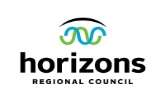
Regional Council
27 April 2022
5.
Mouri Ora, Mouri Awa, Mouri Tangata
5.1.
Extensive effort has been made to place Te Awa Tupua at the heart of the Te Pūwaha
programme in a way that has established a unique partnership model between Horizons,
Whanganui Iwi, WDC, central government, private business and the Whanganui
community.
5.2.
Hapū play a significant role at the centre of the project through the establishment of
Te Mata Pūau to steer and guide the project. Te Mata Pūau is a hapū col ective that invites
participation from al hapū with interest. Project partners have needed to commit to
upholding Te Awa Tupua in the way they work. Horizons has committed to this process
and has been directed and supported to do so by Te Mata Pūau, supported by Ngā
Tangata Tiaki and a Programme Director. The project has and wil continue to have a
strong focus on empowering the community and involving the community in discussions
and approach to project issues and outcomes outside the regulatory process.
5.3.
Iwi and hapū need to be recognised for their contribution to ensuring the project has been
developed and guided by Tupua te Kawa and in the context of the Te Awa Tupua Act.
This relationship has helped guide the approach through Te Pūwaha Project Framework
and ensured a Te Awa Tupua lens has been applied to the overal project. The support and
guidance from iwi and hapū has helped ensure that the implementation of Te Awa Tupua
Act and establishment of a framework for this project has been upheld across the key
partners at both governance and operational levels.
5.4.
He Ara Tuku Rau is an abundance model that has been developed as a support
mechanism for Te Mata Pūau and its decision making. He Ara Tuku Rau seeks to support
Te Mata Pūau and in-turn the project partners to:
Address historic losses and provides a pathway to avoid contemporary adverse
effects.
Set long-term visions and goals for enhancement across appropriate dimensions
aligned with Tupua te Kawa.
Place Te Mata Pūau at the centre of decision-making enabling adverse effects that
undermine Tupua te Kawa (across al dimensions) to be avoided.
Support decision-making in order to enhance Mouri Ora, Mouri Awa, Mouri Tangata.
Provide a pathway for activities to occur in and around Te Pūwaha.
Be based on recognised conceptual foundations and can incorporate existing models,
methods and tools or those designed for a specific project.
Emphasise restoration and the concept of abundance.
Inform a monitoring programme that enables performance reporting for enhancement
interventions that enrich Mouri ora, Mouri awa, Mouri Tangata.
Be robust, transparent, and repeatable.
Be able to be applied commensurate to the scale of the project.
5.5.
The environmental effects associated with the resource consent issues for the North Moles
can be avoided, remedied, or mitigated and are assessed to be no more than minor.
However, consistent with the way we are working on this project from a holistic manner the
project partners are working towards a strategic outcome of Mouri Ora, Mouri Awa, Mouri
Tangata.
5.6.
Horizons have committed to Te Awa Tupua and He Ara Tuku Rau. The outcomes achieved
should not be considered positive effects in relation to the proposed activities, but more a
set of deliberately designed outcomes to achieve the strategic aspiration of Mouri Ora,
Mouri Awa, Mouri Tangata. These aspirations are implicit in what Tupua Te kawa is and a
Lower Whanganui Scheme - Te Pūwaha Update
Page 4

Regional Council
27 April 2022
product of the community led approach. Some examples of how Horizons are contributing
to these aspirations beyond the proposed activities are yet to be determined with Te Mata
Pūau.
5.7.
There are some clearly defined community aspirations which are the product of a
successful community engagement process led by Horizons towards consenting for the
North Mole. The proposed works are considered to improve the integrity of key
infrastructure and reduce the risk of erosion and flooding to the lower Whanganui
community. The Resource Consent Conditions note that works wil also result in an
improvement to the access of this area through the provision of fishing platforms and dune
management. These are the agreed outcomes which funding is being sought for to achieve
the community’s aspirations.
6.
SIGNIFICANT BUSINESS RISK IMPACT
6.1.
There is no significant business risk arising from this item. Some of the project-related risks
are addressed elsewhere in the item.
7.
CLIMATE IMPACT STATEMENT
7.1.
While the work associated with strengthening the river training structures primarily
addresses deferred maintenance over many decades, the work also considers climate
change effects, including rising sea levels, more frequent storms, and a changing flood
frequency for the awa. The design takes into account these factors and was reviewed by
coastal engineering experts at engineering consultancy Tonkin and Taylor, to ensure that
sufficient consideration was given, amongst other things, to climate change impacts. While
the work seeks to provide greater resilience to storm and flood events, there are elements
of the delivery that wil contribute to climate impact for example the use of fossil fuels etc.
8.
BACKGROUND
8.1.
In December 2011 Horizons received a formal request from WDC to extend its then current
river management function, through its Lower Whanganui River Scheme, to include
maintenance of old channel management infrastructure along the lower reach of the
Whanganui River. While a decision on that request was deferred at the time, Council
instructed officers to work col aboratively with WDC to explore options for the longer term
management of issues associated with both river and port management.
8.2.
Ultimately the scope of the Lower Whanganui River Scheme was extended through
adoption of the 2015-25 Long Term Plan, initial y to accommodate river alignment and
erosion control along the South Spit, with the objective of maintaining existing river
alignment upstream of the South Mole.
8.3.
Over the fol owing three years, some minor maintenance works were completed along the
South Spit; monitoring of erosion at various sites was undertaken; and further
investigations were commissioned with respect to the wider issues. Costs were shared by
WDC and Horizons.
8.4.
Investigations undertaken by Tonkin and Taylor Ltd and Coastal Systems Ltd (Dr Roger
Shand) formed the basis of a Situations and Recommendations Report produced in March
2017. That report identified that infrastructure was in a worse state than previously
reported and noted, amongst other things, that slumping and scouring had occurred at
various sites along the North Mole and South Spit since June 2015. The need for
maintenance or improvement works at certain sites was considered urgent.
8.5.
A joint Councils’ project team, established to progress the issue as a priority, held technical
workshops involving coastal and river engineers having long associations with the subject
river reach, and ultimately developed a programme of works that would achieve a balance
Lower Whanganui Scheme - Te Pūwaha Update
Page 5

Regional Council
27 April 2022
between the risk of existing structure failure and a spread of expenditure that best
managed rating impacts.
8.6.
At the same time, the matter of apportionment of funding responsibility was considered and
recommendations were put before both Horizons and WDC in August 2017 (Item 17-153).
8.7.
In its 2018-28 LTP, HRC made provision for a programme of essential maintenance works
to ensure that the aging river control works, designed to regulate the alignment of the lower
reach of river and protect the port, continues to function as intended. WDC, through its LTP
(page 15), made provision for funding 25% of work on the moles at the river mouth for a
period of 10 years.
8.8.
Concurrent with the development of the 2018-28 LTP, discussions were progressed with
Central Government in an effort to secure funding assistance with the works that in
particular would enable an accelerated programme and commensurate reduction in the risk
of failure of existing structures.
8.9.
Ultimately an application for funding through the Provincial Growth Fund was lodged in
August 2019 and in July 2020 an agreement between MBIE and Horizons was executed.
The agreement, which terminates in March 2025, provides for a defined programme of
work, estimated to cost $15M, with a maximum MBIE contribution of $7.5M. Council item
20-128 identified the change in expenditure profile. With the Central Government funding
secured, Horizons formal y committed to the River Training Structures Project and made
provisions for funding through adoption of the 2021-31 Long Term Plan.
8.10. The agreement with MBIE included a key Establishment Condition Precedent requiring the
funding recipient to establish a governance structure consistent with legislative
requirements under the Te Awa Tupua Act, with appropriate stakeholder and community
membership, including the Recipient, WDC and Ngā Tāngata Tiaki o Whanganui.
Furthermore the Precedents required that the Project be a truly community led exercise in
accordance with the Te Awa Tupua legislation; that there be effective engagement with,
and the support of Whanganui Settlement Negotiations Trust and Ngā Tāngata Tiaki; and
that Tupua te Kawa, the innate values of Te Awa Tupua legislated in the 2017 Act, be
incorporated into the governance model and project delivery approach of the project.
8.11. In accordance with these precedents, a Governance Group has been established; a
Project Director (Hayden Turoa) has been appointed; a hapūtuawhā mandated group of
five – Te Mata Pūau, has been formed to lead the project partners to a greater
understanding of their obligations to Te Awa Tupua and Tupua Te Kawa; and formal
approval for progression from Establishment Phase to Delivery Phases has been received
from Kānoa – the Regional Development and Investment Unit of MBIE. At a delivery level,
the river training structures project component of the overal Whanganui Port Revitalisation
Programme, now referred to as Te Pūwaha, is being managed as a true partnership
between Te Mata Pūau and Horizons staff.
8.12. The other components of Te Pūwaha are:
The Port Revitalisation Project (port structures and dredging) managed by WDC:
The Q West Project (relocation and expansion of boat building business), managed by
Q-West Properties; and
The Te Ara Mahi Project (Port Employment Precinct) managed by Whanganui District
Employment Training Trust.
9.
ORIGINAL PROJECT SCOPE & BUDGET
9.1.
A summary of the three stages of the River Training Structures Project, including the
budgets as approved by Central Government through MBIE is shown in Table 1. An
overview of the location and works is provided in Figure 1.
Lower Whanganui Scheme - Te Pūwaha Update
Page 6


Regional Council
27 April 2022
Table 1: Summary of the three stages of the project as approved by central government.
Stage
Description
Original Estimated Cost ($)
1
Project establishment and upgrade/strengthening of North Mole and
7,026,667
revetment
2A
Construction of trial section (50m) of Tanae Groyne and upgrade of
1,000,000
South spit Interface wal .
2B
Upgrade/strengthening of South Mole
5,386,667
Possible extension of Tanae Groyne and improvements/strengthening of
1,586,667
3
various South Spit training structures
Total
15,000,000
Figure 1: Photo of the area showing the location of the North and South Mole, as wel as the Tanae Groyne
(labelled Rock Groyne reconstruction on the image). Inset shows the current erosion control structures and
south spit embayment (upstream of the Tanae Groyne), relating to Stage 3.
10.
PROJECT PROGRESS
10.1. The project has successful y developed a project management structure that is consistent
with the Te Awa Tupua legislation; obtained resource consents, awarded contracts and
progressing Stage 1 works.
10.2. Major contracts have been awarded for rock supply ($3,273,420) and North Mole
re-construction ($3,979,140), a total of $7,252,560. As at the end of March, rock supply is
65% completed and is on track for completion in accordance with the contract schedule.
The placement contract has been blessed with some extremely clement weather, is
approximately 28% complete, and is presently on schedule for completion in November
2022.
10.3. With Stage 1 works now wel underway, some staff resources have been assigned to
preparatory work in relation to both Stages 2A and 2B. The decision to separate these
components was driven by the fact that for Stage 2A (trial section of Tanae Groyne and
associated works) design work had already been completed and relatively straight forward
consenting and community consultation processes were anticipated. By comparison, a
Lower Whanganui Scheme - Te Pūwaha Update
Page 7
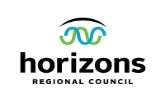
Regional Council
27 April 2022
significant amount of design, options assessment, and execution methodology work in
respect of Stage 2B (South Mole) is yet to be undertaken.
10.4. To date, with respect to Stage 2A a draft assessment of environmental effects (AEE)
has been completed and is presently being reviewed by Te Mata Pūau and a draft consent
application is near completion. It is anticipated that a consent wil be granted and that we
wil be in a position to cal tenders for the work in July. Completion is programmed during
year 2022/23.
10.5. As for Stage 2B, Tonkin and Taylor have been commissioned to undertake preliminary
design and option assessment work. Other consultants have been engaged to complete an
aquatic impact assessment and to prepare a draft resource consent application. It is
anticipated that design options, which could have significantly different cost impacts, wil be
available for assessment and for Council’s consideration in May. Current programming
assumes that a single rock supply and placement contract for this work wil be awarded by
October 2022, and that al work wil be completed in the 2023/24 year.
11.
REVISED BUDGET
11.1. At the funding application stage, estimates were necessarily ‘rough order of cost’ on
account of the substantial quantities of particularly large sized and high quality rock
required and the known difficulty of sourcing that material. There was also little recent
experience with placing such large material in such an exposed coastal location.
11.2. Now that the major contracts have been awarded for Stage 1, there is increased
confidence in our revised estimated cost to completion of Stages 1 & 2 (Table 2). Revised
cost estimates for Stages 2A and 2B take account of experience gained through Stage 1
contract processes; reflect now understood broader project management costs; and to the
extent possible, anticipate increased civil engineering works costs resulting from fuel price
increases and strained industry capacity. Revised estimates for Stage 2A can be regarded
with a reasonable degree of confidence, however until a preferred design for Stage 2B has
been approved, and consequently rock type and quantities are known, estimates for that
work must be regarded as ‘rough order’.
Table 2: Comparison of the original and proposed revised budget for Stage 1 & 2 of the project.
Estimated
Estimated
Difference
Difference
Stages 1 & 2
cost - original
revised cost
($)
(%)
budget ($)
March 2022($)
Project planning and support
Consents
130,000
229,915
99,915
77%
Investigation/designs
160,000
313,995
153,995
96%
Comms + project management
833,334
2,130,970
1,297,636
156%
Sub total
1,123,334
2,674,880
1,551,546
138%
Construction
Stage 1 North mole
6,490,000
7,286,638
796,638
12%
Stage 2 A Tanae Groyne
800,000
1,000,000
200,000
25%
Stage 2 B South Mole
5,000,000
5,200,000
200,000
4%
Sub total
12,290,000
13,486,638
1,196,638
10%
Total Stages 1 & 2
13,413,334
16,161,518
2,748,184
20%
11.3. The current estimated cost to completion for Stage 1&2 (Table 2), including al project
establishment and management costs, is $16,161,518 which is 20% over the original
estimate ($13,413,334). The updated estimate does include a contingency sum and at this
stage it is assumed that wil be required. The main outstanding uncertainty is in relation to
the two fishing platforms that are currently the subject of a Provisional Sum in the
Lower Whanganui Scheme - Te Pūwaha Update
Page 8
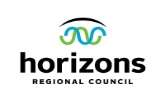
Regional Council
27 April 2022
placement contract. Staff are aiming to have a firm sub-contract price for that item
confirmed for Council on 27 April.
11.4. These fishing platform costs are a key contributor to the variance for Stage 1. These are an
example of the cost of meeting community aspirations for enhanced amenity and were
committed to as a part of the consent for delivery within the project works. Developing such
ideas is an integral part of the project (see Section 14 below). Within the Stage 1 project
the two original fishing platforms that had to be demolished as part of the works comprised
simple concrete slabs at the top of the river bank. Estimated cost to demolish and replace
these at the top of the raised and reconstructed rock lining was identified and budgeted at
$250,000. However, an extensive engagement process has arrived at a preference for
more elaborate stepped concrete structures which wil provide for considerably improved
fishing amenity and a multi-purpose function. A detailed design has been completed and a
Provisional Sum of $1.0M is included in the placement contract for construction of these
much more complex structures. Further comment is made below with regard to potential
amenity enhancement costs over the balance of the project.
11.5. A variety of factors contribute to the other variances in the revised budget for Stage 1&2,
including (primarily) the above referred to uncertainty around rock supply and placement
costs; project-heavy communications activity, and costs related to the Project Director role
and the application of the of the principles of Tupua Te Kawa being largely unbudgeted at
the time of seeking PGF funding. These costs were not included in the estimates submitted
with the funding application and Council via item 20-128 authorised Horizons entering into
a funding agreement between NgāTangita Tiaki, WDC, and Horizons “… that provides for
both a Project Director and that al ows for Ngā Tangata Tiaki to fulfil its statutory function
as defined by the 2017 Te Awa Tupua (Whanganui River Claims Settlement) Act”. While
these costs were not original y identified with the project budgets MBIE has recently
confirmed that they are eligible for the 50% funding assistance, but only to the extent that
they can be accommodated within the fixed government contribution of $7.5M. A
breakdown of budgeted project management costs for the project (al three stages) and the
updated estimates through to the completion of Stage 2, is shown in Table 3.
Table 3: Summary of changes to River Training Structures project management costs for the project.
Description
Original
Revised
Difference
HRC share
Estimate ($)
budget ($)
($)
of cost ($)
Horizons River Management staff inputs to funding
1,200,000
1,366,489
166,489
1,366,489
application, consents, community consultation, contract
documentation,
tender
processes,
contract
management, works supervision, reporting.
Project Director - overal Te Pūwaha Project leadership.
nil
215,834
215,834
215,834
Note this is 30% of the overal cost. The other 70% (not
shown in this table) is paid for by WDC over and above
the WDC commitment to the river training structures
component of the Te Pūwaha project. This arrangement
reflects Horizons funding the Project Director
contribution to the River Training Structures part of the
broader Te Pūwaha project.
Te Mata Pūau - leading the funded project partners to a
nil
201,640
201,640
201,640
greater understanding of their obligations to Te Awa
Tupua and Tupua Te Kawa. Horizons portion (30% of
total cost for the broader project).
Cultural Monitor / Iwi Advisor
nil
192,146
192,146
192,146
Total
1,200,000
1,976,109
776,109
1,976,109
11.6. A summary of revised estimated costs for Stages 1 and 2, relative to original estimates for
the whole project, is presented in the Table 4 below. As a result of the increases in costs
for delivery of Stages 1 & 2 there is insufficient budget to complete both Stages 1 & 2 and
a reduced scope for the project as Stage 3 can no longer fit into the budget.
Lower Whanganui Scheme - Te Pūwaha Update
Page 9
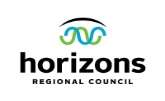
Regional Council
27 April 2022
11.7. To complete Stages 1&2 it is estimated that $1.162M of further funding wil be required
over and above the total project budget of $15M. For the purposes of the resolution for
Council this paper has included additional sums of $100,000 for scoping in relation to
Stage 3 works (see Section 13 below) and $100,000 for amenity enhancement works (see
Section 14 below). The total additional budget required to complete Stage 1&2 and these
additional pieces of work is estimated at $1.36M above the original project budget. As
noted above there are uncertainties in this estimate and for the purposes of the resolution
the amount has been rounded to $1.4M, noting uncertainties stil remain even with that
increased amount.
11.8. Horizons have notified the Governance Group of the project, WDC and MBIE of the budget
shortfal s including the reduction in scope to remove Stage 3 from the central government
co-funded project. MBIE have verbal y accepted this change in scope, and Horizons are
awaiting written confirmation of the acceptance of this change in scope to the contract.
Table 4: Comparison of the original and proposed revised budget for the project.
Estimated cost
Estimated revised
Difference
Difference
Stage
- original
cost - March 2022
($)
(Percentage)
budget ($)
($)
1
7,026,667
8,563,647
1,536,980
22%
2A
1,000,000
1,200,000
200,000
20%
2B
5,386,667
6,397,871
1,011,204
19%
Stage 1 & 2 subtotal
13,413,334
16,161,518
2,748,184
20%
Stage 3
1,586,667
0
-1,586,667
removed from scope
Stage 3 scoping only
100,000
100,000
new
Further amenity enhancement
100,000
100,000
new
scoping & implementation
Total
15,000,000
16,361,518
1,361,517
8% with reduced scope
Funding
KANOA/MBIE
7,500,000
7,500,000
0
0%
Horizons
5,700,000
7,061,518
1,361,518
24%
WDC
1,800,000
1,800,000
0
0%
Total
15,000,000
16,361,518
1,361,518
8% with reduced scope
12.
POTENTIAL RATING IMPACT
12.1. The River Training Structures part of the overal programme is funded via an agreement
between MBIE and Horizons dated 10 July 2020. This provides for a Central Government
contribution of up to $7.5M towards a $15M project to strengthen and upgrade old river
training structures in the lower reach of the Whanganui River. Horizons contribution to this
project is $5.7M and WDC’s contribution $1.8M. Horizons contribution to this project is loan
funded over 25 years from 2021/22. The loan being serviced via the Lower Whanganui
River Scheme that has a funding policy of 80% targeted rates and 20% general rate
contribution.
12.2. The Lower Whanganui Scheme has other current/planned capital projects including:
Kowhai Park Egress Gate upgrade which is loan funded over 20 years from 2023/24;
Kowhai Park water inflated property protector (WIPP) replacement which is loan funded
over 20 Years from 2021/22;
Putiki Stopbank Project which is loan funded over 20 Years from 2023/24;
CBD Upgrades/Climate Change which is loan funded over 20 Years from 2023/24;
Q-West Stopbank Upgrade which is planned to be loan funded.
12.3. The proposed changes to the Annual Plan budget for 2022-23 and beyond include
consideration of a range of factors as outlined below.
Lower Whanganui Scheme - Te Pūwaha Update
Page 10

Regional Council
27 April 2022
12.4. A primary consideration for the revised budgets is the forecast increased costs for the
delivery of Stages 1 and 2 which are now projected to be delivered for a total budget of
$16.2M, being approximately $2.75M or 20% higher than original y budgeted. Cost
increases relate to project management and communications $1.297M, consenting and
design $0.254M, construction costs for stage 1 ($0.8M) and for Stage 2 $0.4M. It is noted
that the cost projection for Stage 1 construction includes a provisional sum of an additional
$0.75M for two fishing platforms and staff are working to get further certainty around this
amount prior to the Council meeting;
12.5. Proposed budgets for the Annual Plan also require alignment with Horizons rating with the
funding commitments of the government contract for the River Training Structures part of
the Te Pūwaha project. Currently Horizons LTP for 2018-2028 and LTP 2021-2031 both
overestimate the WDC contribution at 25% rather than the fixed $1.8 mil ion contribution.
This requires an increase of the Horizons contribution via the loan and is partial y offset
over the longer term by Horizons having committed additional funding to this work over a
longer period of time in the LTP.
12.6. The revised budgets also account for new information on the phasing of Horizons planned
expenditure on this project. This includes under expenditure in previous years and updated
budgets for the next two years. The Lower Whanganui Scheme was $3.065 mil ion
underspent in the 2020-21 year (last financial year) including $2.883M for the River
Training Structures project. The forecast for the current year is to spend $5.633M of the
$6.698M budget a saving of $1.065M for the Lower Whanganui Scheme projects. These
savings to the budgets have an impact of lower loan repayment requirements for this and
the future years until the works programme “catches up”.
12.7. The underspends in the previous years have also required additional work to be
programmed, and budget to be al ocated, for the next two years in order to deliver the
River Training Structures project, including the increased costs that have been identified
above. These costs wil impact on the loan repayments to a limited extent in the year the
work is completed and more so in the years of the loan after the work is completed.
12.8. The phasing of other Lower Whanganui Scheme related work has also been revised as
shown in Table 5. Overal the increased costs for the two years is $1.365M more than the
LTP noting some works previously budgeted have been deferred to 2024 or beyond.
Table 5: Comparison of LTP and proposed revised budgets for the 2022-23 and 2023-24 financial years.
LTP
Forecast Difference
LTP
Forecast Difference
LTP
Forecast Difference
Project
Budget
Budget
Budget
2022-23
2022-23
2022-23
2023-24
2023-24
2023-24
2022-24
2022-24
2022-24
Q-West stopbank
upgrade
175,026
25,361
-149,665
0
23,520
23,520
175,026
48,881
-126,145
Climate change
impact - CBD
178,768
28,061
-150,707
162,639
176,100
13,461
341,407
204,161
-137,246
Kowhai Park -
replacement of
0
243,104
243,104
161,461
19,725
-141,736
161,461
262,829
101,368
portable flood barriers
Kowhai Park egress
gate
0
0
164,172
164,603
431
164,172
164,603
431
Putiki flood protection
project
26,914
26,912
-2
529,830
472,668
-57,162
556,743
499,580
-57,163
Sub total
380,708
323,438
-57,270 1,018,101
856,616
-161,485 1,398,809 1,180,054
-218,755
River Training works
6,455,608 7,661,444 1,205,836 1,863,806 2,241,933
378,127 8,319,414 9,903,377 1,583,963
Total Lower
Whanganui Scheme
6,836,316 7,984,882 1,148,566 2,881,907 3,098,549
216,642 9,718,223 11,083,431 1,365,208
12.9. The under expenditure in previous and current years, re-phasing of budgets and the loan
mechanism for Horizons funding al combine to limit the impact of the increased budgets
for the River Training Structures project on Lower Whanganui Scheme Rates over the next
two years (Table 6). However the deferral of other Lower Whanganui Scheme works and
increased work programme on the River Training Structures over the next two years are
Lower Whanganui Scheme - Te Pūwaha Update
Page 11
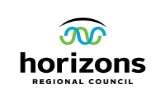
Regional Council
27 April 2022
projected to result in increases in 2024-25 and beyond. These increases are difficult to
forecast at this stage, as some of the work is not ful y scoped at this point in time, including
if the potential budgets for Stage 3 of the River Training Structures project.
Table 6: Comparison of Horizons targeted rate contributions to the Lower Whanganui Scheme.
Financial year
2021-22
2022-23
2023-24
Total
Long Term Plan year
1
2
3
Project year
Year 2
Year 3
Year 4
LTP Targeted rate ($)
$619,019
746,911
807,357
2,173,287
New Annual Plan targeted rate ($)
$619,019
735,055
823,033
2,177,107
Movement ($)
0
-11,856
15,676
3,820
13.
STAGE 3 WORKS
13.1. The works proposed under Stage 3 comprised of:
Possible extension of Tanae Groyne; and
Improvements/strengthening of South Spit erosion protection/training structures
upstream of Tanae Groyne.
13.2. The purpose of Tanae Groyne is to deflect river flows into the port entrance adjacent to
Wharf 1, to facilitate necessary sedimentation for south westerly wave dissipation and to
protect the South Mole and Interface Wal structures. Deflecting river flows wil ensure a
navigable depth for vessels to enter the turning basin and possibly reduce the amount of
dredging that is required. The purpose of strengthening the very old South Spit erosion
control structures would be to maintain river alignment and reduce the likelihood of the
river breaching through the Spit (as happened in 1946, Figure 3) and outflanking the South
Mole, particularly at the South Spit embayment.
13.3. The possible need to extend the initial 50m length of Tanae Groyne (to be constructed in
Stage 2A), in order to achieve the desired degree of sedimentation and main flow
deflection from South Spit, has previously been raised by Tonkin and Taylor. However
before a decision is made in that regard, some monitoring of the performance of the initial
trial section of Groyne should be undertaken. It is likely to require at least two or three
annual floods before effects are apparent and accordingly it is difficult at this stage to
predict if an extension is indeed required, what scale of extension might be required, and
what the timing of any works should be.
13.4. A similar situation applies with regards to improvements to certain erosion
protection/training structures along South Spit (Figure 4, Figure 5). In particular the
treatment of a large erosion embayment immediately upstream of the Tanae Groyne is
specifical y identified in the funding agreement. However the nature and extent of works
required, and possibly even the need for works, could wel be influenced by the
performance of the trial section of Tanae Groyne being constructed as Stage 2A of the
project (scheduled for completion by 30 June 2023).
13.5. Accordingly, given that the ful cost of Stage 3 works wil need to be funded by Horizons.
Council may wish to defer any Stage 3 work at this time and to receive separate proposals
for funding of such works under the Whanganui River Scheme, as and when their need is
confirmed. In this case, staff would recommend that the sum of $100,000 be included in
the revised Te Pūwaha project budget to al ow for monitoring of completed Stage 1 and 2
works and for scoping investigations into possible Stage 3 measures. Detailed design and
consenting for any ultimately recommended measures would then be included in future
estimates.
Lower Whanganui Scheme - Te Pūwaha Update
Page 12
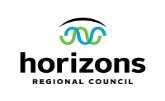
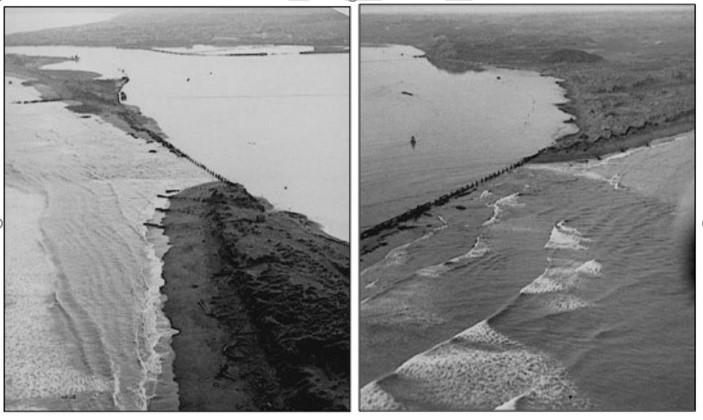

Regional Council
27 April 2022
Figure 3: Photos of the breach of the South Spit in 1946 (Source unknown).
Figure 4: Photo of the area showing the location of key river management infrastructure in the lower
Whanganui River. Note Stage 3 of the project relates to structures upstream of the Tanae Groyne on the same
side of the river, including the South spit embayment, south spit Groynes and concrete walls. Map created in
2017.
Lower Whanganui Scheme - Te Pūwaha Update
Page 13
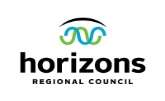

Regional Council
27 April 2022
Figure 5: Map of the South Spit erosion protection/alignment control works.
14.
Amenity enhancement projects
14.1. The amenity enhancement works that have been specifical y included in the revised project
budgets are those relating to the enhanced fishing platform construction referred to above;
a North Mole amenity concept design and a star compass design. A report on the He Ara
Tuku Rau abundance model has also been completed, in February 2022, as a part of the
project providing an abundance focussed assessment framework to support decision
making.
14.2. Other additional potential amenity enhancement items that have been identified to date
through community engagement include those identified in Table 6 below. Cost estimates
have been derived through an informal working group including the Project Director,
members from Horizons, WDC, and the community group Progress Castlecliff. Some items
have been priced to a reasonable degree of accuracy, for example the carpark, which was
estimated by the WDC Roading Al iance. The majority of estimates are however ‘rough
order’, being based on concepts rather than defined outcomes. There is clearly a desire
from the community that Horizons and WDC deliver these outcomes, with as much
external funding assistance as can possibly be sourced, however, no commitment has
been given to delivery or funding of these at this point in time. It is important to note that
WDC are currently recruiting for a Project Manager to drive these sub-projects, including
the application for external funding, and it has been proposed that Horizons contribute to
this position.
14.3. This paper highlights to Council the types of projects that are being considered and
discussed as a part of the community engagement and includes a provision for some
projects (as outlined above). The proposed revised budgets above also make provision for
further scoping and potentially further implementation of some of these up to a total budget
of $100,000 over the next two years with any further proposals to be decided on by
Council ors through the usual Council processes including Annual Plan and Long-term
Plan processes.
Lower Whanganui Scheme - Te Pūwaha Update
Page 14

Regional Council
27 April 2022
Table 6: Potential projects identified through community engagement in relation to the Te Pūwaha Project.
Item
‘Rough order’
estimated cost
1
Improved North Mole Car Park (including services, lighting and viewing area)
$1,500,000
2
Toilet & Shower
$250,000
3
Dune Restoration (North and South)
$200,000
4
Additional Fishing Platforms (x2) – further to those in Stage 1
$800,000
5
Star Compass
$100,000
6
North Mole Landscaping (Arts & Design eg interpretive panels and māori artwork
$200,000
7
Upstream Amenities (smal carpark, picnic area, seating etc.)
$500,000
8
Project Management Resource to deliver outcomes
$600,000
Total
$4,150,000
15.
CONSULTATION
15.1. Community engagement through Te Mata Pūau wil be ongoing for the term of the River
Training Structures project. No additional consultation is planned at present, however it is
likely that the Te Pūwaha project could be included in some form of further consultation
related to the forthcoming Annual Plan processes.
16.
TIMELINE / NEXT STEPS
16.1. Councils decisions on this paper wil be incorporated into the Annual Plan process and
inform next steps for the project.
17.
SIGNIFICANCE
17.1. This is not a significant decision according to the Council’s Policy on Significance and
Engagement.
Al an Cook
Dougal Ross
PROJECT ENGINEER
PROJECT ENGINEER
Adrian Smith
Jon Roygard
CHIEF FINANCIAL OFFICER
GROUP MANAGER CATCHMENT OPERATIONS
ANNEXES
There are no attachments for this report.
Lower Whanganui Scheme - Te Pūwaha Update
Page 15


















